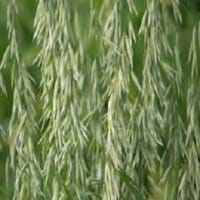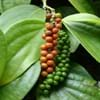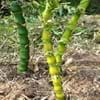Life Span
Annual
Perennial
Origin
Hybrid origin, Europe
Southeastern Asia
Types
Not Available
Bigleaf hydrangea, Hortensia, Smooth hydrangea, Oakleaf hydrangea, Annabelle
Number of Varieties
Not Available
Habitat
Farms
Forest edges, Hillside, Woods
USDA Hardiness Zone
Not Available
9-11
AHS Heat Zone
10 - 1
12*1
Sunset Zone
1a, 1b, 2a, 2b, 3a, 3b, 4, 5, 6, 7, 8, 9, 14, 15, 16, 17, 18, 19, 20, 21, 22, 23, 24
H1, H2, 17, 23, 24
Habit
Clump-Forming
Spreading
Flower Color
Green, Light Green
Blue, Dark Purple, Light Purple, Red, White
Flower Color Modifier
Bicolor
Bicolor
Fruit Color
Not Available
Not Available
Leaf Color in Spring
Light Green, Gray Green
Green, Light Green
Leaf Color in Summer
Light Green
Green, Light Green
Leaf Color in Fall
Light Green, Yellow green, Gold
Green, Light Green
Leaf Color in Winter
Not Available
Light Green
Leaf Shape
Linear
Oblovate
Plant Season
Not Available
Spring, Summer, Fall, Winter
Sunlight
Full Sun
Partial shade, Full Shade
The pH of Soil
Neutral
Acidic
Soil Drainage
Well drained
Well drained
Bloom Time
Late Spring, Early Summer
Spring, Summer
Tolerances
Not Available
Drought
Where to Plant?
Ground
Container, Ground
How to Plant?
Seedlings
Seedlings, Stem Planting
Plant Maintenance
Medium
Medium
Watering Requirements
Requires a lot of watering, Requires watering in the growing season
Not Available
In Summer
Lots of watering
Average Water
In Spring
Moderate
Moderate
In Winter
Average Water
Average Water
Soil Drainage Capacity
Well drained
Well drained
Sun Exposure
Full Sun
Partial shade, Full Shade
Pruning
Remove damaged leaves, Remove dead branches, Remove dead leaves
Remove damaged leaves, Remove dead branches, Remove dead leaves
Fertilizers
All-Purpose Liquid Fertilizer
All-Purpose Liquid Fertilizer
Pests and Diseases
Red blotch
Red blotch
Plant Tolerance
Drought
Drought
Flowers
Insignificant
None
Flower Petal Number
Single
Single
Foliage Texture
Fine
Fine
Foliage Sheen
Glossy
Glossy
Attracts
Not Available
Bees, Flies
Allergy
no allergic reactions
Chest tightness, Diarrhea, Dizziness, Nausea, Vomiting
Aesthetic Uses
Not Used For Aesthetic Purpose
Not Available
Beauty Benefits
Not Available
Not Available
Edible Uses
Yes
Not Available
Environmental Uses
Air purification
Air purification
Medicinal Uses
Menstrual Disorders, osteoporosis, Urinary tract problems
Fever, Kidney problems, Urinary tract problems
Part of Plant Used
Whole plant
Flowers, Root
Other Uses
Culinary use, Used for pasture
Not Available
Used As Indoor Plant
No
Not Available
Used As Outdoor Plant
Yes
Yes
Garden Design
Edible
Container, Groundcover, Hanging Basket, Houseplant, Tropical
Botanical Name
AVENA sativa
DAVALLIA trichomanoides
Common Name
Oat
Squirrel's Foot Fern
In German
Haferpflanze
Hortensie
In French
Plantes d'avoine
Hortensia
In Spanish
planta de avena
Hortensia
In Greek
φυτό βρώμη
υδραγεία
In Portuguese
aveia planta
Hortênsia
In Polish
Owies roślin
Hortensja
In Latin
Oat plant
Hibiscus
Phylum
Tracheophyta
Not Available
Class
Liliopsida
Not Available
Order
Poales
Not Available
Family
Poaceae
Davalliaceae
Genus
Avena
Not Available
Clade
Angiosperms, Commelinids, Monocots
Not Available
Tribe
Aveneae
Not Available
Subfamily
Pooideae
Not Available
Number of Species
Not Available
Not Available
Difference Between Oat plant and Squirrel's Foot Fern
If you are confused whether Oat plant or Squirrel's Foot Fern are same, here are some features about those plants to help you choose better. Many people think that these two plants have the same characteristics, but one can see Oat plant and Squirrel's Foot Fern Information and learn more about it. Fertilizers required for proper growth of Oat plant are All-Purpose Liquid Fertilizer, whereas for Squirrel's Foot Fern fertilizers required are All-Purpose Liquid Fertilizer. Hence, one should know the basic difference between Oat plant and Squirrel's Foot Fern if you are planning to have them in your garden to enhance its beauty.
<
Flowering PlantsImportance of Oat plant and Squirrel's Foot Fern
Want to have the most appropriate plant for your garden? You might want to know the importance of Oat plant and Squirrel's Foot Fern. Basically, these two plants vary in many aspects. Compare Oat plant and Squirrel's Foot Fern as they differ in many characteristics such as their life, care, benefits, facts, etc. Every gardener must at least have the slightest clue about the plants he wants to plant in his garden. Compare their benefits, which differ in many ways like facts and uses. The medicinal use of Oat plant is Menstrual Disorders, osteoporosis and Urinary tract problems whereas of Squirrel's Foot Fern is Fever, Kidney problems and Urinary tract problems. Oat plant has beauty benefits as follows: Not Available while Squirrel's Foot Fern has beauty benefits as follows: Not Available.
Compare Facts of Oat plant vs Squirrel's Foot Fern
How to choose the best garden plant for your garden depending upon its facts? Here garden plant comparison will help you to solve this query. Compare the facts of Oat plant vs Squirrel's Foot Fern and know which one to choose. As garden plants have benefits and other uses, allergy is also a major drawback of plants for some people. Allergic reactions of Oat plant are no allergic reactions whereas of Squirrel's Foot Fern have Chest tightness, Diarrhea, Dizziness, Nausea and Vomiting respectively. Having a fruit bearing plant in your garden can be a plus point of your garden. Oat plant has showy fruits and Squirrel's Foot Fern has no showy fruits. Also Oat plant is not flowering and Squirrel's Foot Fern is not flowering . You can compare Oat plant and Squirrel's Foot Fern facts and facts of other plants too.





